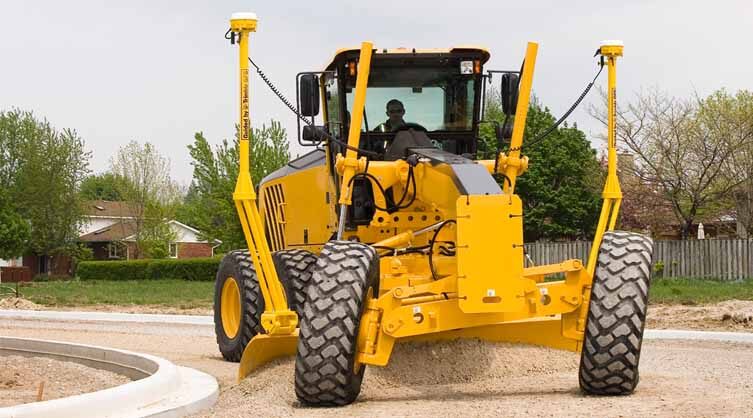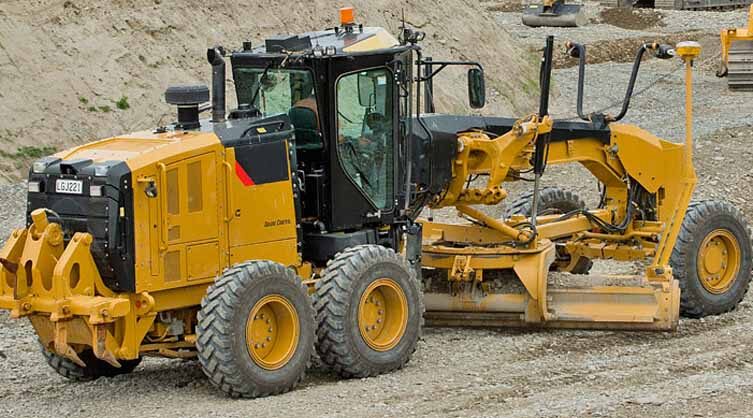Trimble democratise solutions for better, safe and wide access
By Edit Team | June 16, 2022 1:51 pm SHARE

“Today we’re moving from system to platform and are connecting a number of solutions.” – Rajan Aiyer, Vice President and Managing Director, Trimble, South Asia Region)
Can you brief us on your company’s journey and its profile?
In January 2015, we began investing in and marketing our innovative Technology solutions in the Indian market, which we believe is now ready. It was the time when the Indian industries were how they can improve their workflow, the way they operate to work on their job sites. Showing and visiting larger customers and contractors or field operation people to explain. We’ve been effective in demonstrating to our partners what our systems offer and how they can assist them do a better job, be more efficient in equipment utilisation, and improve operator abilities so they can be more productive per day, prevent errors, and make the worksite more efficient.
We work closely with contractors to ensure that they understand the Machine Control technology, how to use it, and how it will affect the way they design. The first step is to not only complete the task but also to avoid making mistakes. There will be no rework if there are no mistakes. But, as usual, step two must be to demonstrate how our solutions are dramatically enhancing machine productivity. And we may see contractors double the output of a motor grader doing fine grading in a matter of days, as well as more than doubling some time. Our systems aren’t designed to be“set and forget.” It’s a true relationship and tight collaboration with garbage removal companies.
What kind of challenges do you foresee in the Indian market with regards to Trimble?
Because people are unfamiliar with our technology, the issues we’ve had in India have been similar to those we’ve faced across the world. Our customers frequently ask the same issues about cost, installation, training, and people’s ability to use it. It’s not difficult once we get through that. It’s commonly said that it’s a complicated system. The intricacy, on the other hand, is the result of our engineers’ efforts to create a user-friendly system. And if an operator can use his phone, he can use our system, too, it’s that simple.
What kind of customisation possibilities do you give for customers?
Our clients own a variety of machines. So, the first order of modification is to figure out how to suit our equipment. We have two antennas that point to the sky, a dashboard that fits in the panel, and then we control the hydraulics. Therefore all hydraulic modification must be completed. Secondly, each customer is at a distinct stage of development for us. Few contractors are already huge and they are aware of what technology is capable of. Even if another medium-sized customer is digitally knowledgeable, we must teach them, their team, and their operators. As a result, each of them requires customisation.

“We’re democratising our Machine Control Solution so that every field worker has access to information about positioning, statistics and site efficiency.” Didier Colin, Senior Director of Sales and Distribution for Trimble CIS Division.
Third, how do you evaluate the ROI of customisation? Labour in India is still relatively cheap in comparison to the rest of the globe. Our ROI will be in terms of ecologically friendly construction and more efficient equipment use. That implies fewer machines performing more work at a greater quality. You save money on fuel, maintenance, and operator fees, among other things. We have many gradations, so you may mix and match operators. These are the software modifications we’re still working on. In India, we have a massive army. Trimble has a presence in India, accounting for 10 percent of the company. Our workplace, which can seat up to 3000 employees, is housed in a towering, gleaming edifice in Chennai. We provide customisation services not only to Indian consumers but also to customers from other countries.
What kind of safety features do you promise from your application?
All data is kept by the contractor behind a firewall application. We do not change the data on the contractor’s behalf because he has privileged access to it. That’s what he’s meant to do. We offer data by employing sensors. For example, if you’re conducting compaction, you may see three sections on the display: red signifies it’s undone, yellow means it’s in the process, and green implies it meets the compaction standards. This information is sent to the contractor in real time. He may declare that machine X at this job site has been running for eight hours. And he has achieved the desired compaction level across an area of around 5–10 square kilometres. And this is information that he has access to only.
What kind of response do you get from the Indian customers?
The initial response was a mixed one. When we show a customer the machine control system, they are frequently unsure why they should invest in it. The contractors, on the other hand, come back and buy it without hesitation after using it for a trial period and proving its usefulness. They improved productivity, efficiency, and reading quality.
Can you brief us about your other business verticals?
In terms of maintenance, refurbishment, or airports, we have a lot of applications in earth moving equipment, excavators, and paving solutions. We also have a significant presence in maritime construction, as you are aware, where we provide cranes for block placing or excavators for waterways, harbours, and dredging projects. We’re also working on and spending more on a security solution that can be integrated with our platform. Today, we’re transitioning from system to platform, and we’re linking a variety of solutions: augmented reality, scale or waiving information, security solutions, people detection, and so on. All of these things will make the site more efficient and safer. Furthermore, we are democratising our solution so that every field worker has access to information regarding positioning, statistics, site efficiency, and how they can continue to improve everything.

What kind of opportunities do you see in India?
Because the market is great, I see a lot of potential. Yes, the technology adaption is low so far, but the market requires and demands it, and we received good responses and interest for our technology. We continue to assess our solutions and their functions, methods of implementation, benefits, efficiency, cost, and other factors. What is the expected return on investment? We have demonstrated that the return on investment is in four to six months. Customers’ productivity has more than doubled from the beginning. To make surveys more productive, we have created simple 3D design tools. This tool enables you to communicate data straight from the office to the machine via IoT. You do not need to travel since a design modification can be performed remotely.
Cookie Consent
We use cookies to personalize your experience. By continuing to visit this website you agree to our Terms & Conditions, Privacy Policy and Cookie Policy.




































-20240213125207.png)

























